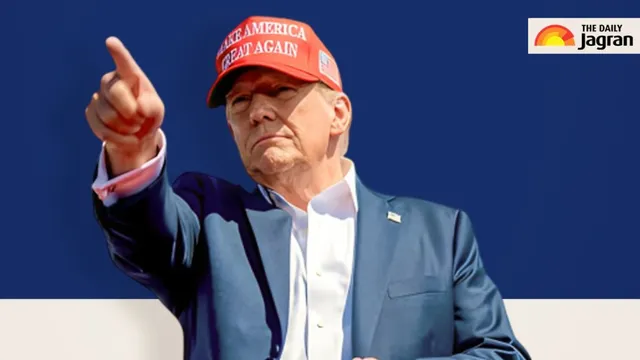- By Supratik Das
- Fri, 01 Aug 2025 07:39 AM (IST)
- Source:JND
Trump tariffs 2025: In a sweeping move aimed at rebalancing trade relationships, US President Donald Trump has declared new tariffs of up to 41 per cent on imports from nearly 70 nations, including a 25 per cent tariff on exports from India, based on unbalanced trade and a lack of coherence on economic and national security issues. The new duties, specified in an executive order called "Further Modifying the Reciprocal Tariff Rates", will be effective at 12:01 a.m. EDT on August 7, 2025, after the expiration of the Trump administration's August 1 negotiation deadline.
Full List: Countries Impacted And Tariff Rates
Countries hit with the highest new rates are Syria (41 per cent), Switzerland (39 per cent), Iraq and Serbia (35 per cent), and Brazil (50 per cent). Other prominent countries are:
• Afghanistan 15 per cent
• Algeria 30 per cent
• Angola 15 per cent
• Bangladesh 20 per cent
• Bolivia 15 per cent
• Bosnia and Herzegovina 30 per cent
• Botswana 15 per cent
• Brazil 10 per cent
• Brunei 25 per cent
• Cambodia 19 per cent
• Cameroon 15 per cent
• Chad 15 per cent
• Costa Rica 15 per cent
• Côte d`Ivoire 15 per cent
• Democratic Republic of the 15 per cent
• Congo
• Ecuador 15 per cent
• European Union 0 per cent–15 per cent
• Equatorial Guinea 15 per cent
• Falkland Islands 10 per cent
• Fiji 15 per cent
• Ghana 15 per cent
• Guyana 15 per cent
• Iceland 15 per cent
• India 25 per cent
• Indonesia 19 per cent
• Israel 15 per cent
• Japan 15 per cent
• Jordan 15 per cent
• Kazakhstan 25 per cent
• Laos 40 per cent
• Lesotho 15 per cent
• Libya 30 per cent
• Liechtenstein 15 per cent
• Madagascar 15 per cent
• Malawi 15 per cent
• Malaysia 19 per cent
• Mauritius 15 per cent
• Moldova 25 per cent
• Mozambique 15 per cent
• Myanmar (Burma) 40 per cent
• Namibia 15 per cent
• Nauru 15 per cent
• New Zealand 15 per cent
• Nicaragua 18 per cent
• Nigeria 15 per cent
• North Macedonia 15 per cent
• Norway 15 per cent
• Pakistan 19 per cent
• Papua New Guinea 15 per cent
• Philippines 19 per cent
• Serbia 35 per cent
• South Africa 30 per cent
• South Korea 15 per cent
• Sri Lanka 20 per cent
• Switzerland 39 per cent
• Taiwan 20 per cent
• Thailand 19 per cent
• Trinidad and Tobago 15 per cent
• Tunisia 25 per cent
• Turkey 15 per cent
• Uganda 15 per cent
• United Kingdom 10 per cent
• Vanuatu 15 per cent
• Venezuela 15 per cent
• Vietnam 20 per cent
• Zambia 15 per cent
• Zimbabwe 15 per cent
Among these nations, the European Union, China (subject to final agreement), and Mexico were partially exempted or given time extensions, respectively, based on bilateral advancements. The new duties come amid rising inflation concerns in US Commerce Department data showed prices for durable goods and recreational items surged in June, prompting criticism that Trump’s tariffs could further fuel domestic inflation. Trump's invocation of the 1977 International Emergency Economic Powers Act in defense of the tariffs is under challenge in American courts. Federal appeals court judges recently raised doubts about the lawfulness of invoking such sweeping emergency powers for trade policy.
India–US Trade Relations at Crossroads
India, one of the largest US trading partners, now faces a 25 per cent “Reciprocal Tariff, Adjusted”, after trade talks between New Delhi and Washington reportedly hit a roadblock over access to India’s agriculture sector and its ongoing purchases of Russian oil. Even as negotiations continue, Trump accused India of not providing "sufficiently balanced terms" and threatened additional sanctions if New Delhi does not align more closely with US trade and security interests. The announcement triggered a decline in the Indian rupee and sparked political uproar domestically, with opposition leaders accusing the government of “mishandling” critical trade negotiations with Washington. Though both governments have made public overtures to deepen economic cooperation, the recent tariff move represents a precipitous setback. India's reluctance to open up its agri-economy, as well as its energy pacts with Russia, continues to be a point of contention.
Trump's presidential order states,“Some trading partners, despite having engaged in negotiations, have offered terms that, in my judgment, do not sufficiently address imbalances… or have failed to align sufficiently with the United States on economic and national-security matters.” With the new tariff scheduled to take effect next week, India's exporters and businesses anticipate a rise in costs that might affect more than USD 50 billion of bilateral trade in goods every year.
The Trump administration suggested that more trade agreements are in the pipeline and may transform the tariffs for some countries. Yet for nations such as India, any adjustments will likely be dependent on a revamped strategy toward trade, investment, and geopolitical balance. As the world grapples with the implications of this enormous tariff reset, pressure on governments is building to re-engage diplomatically or risk worsening economic fallout.

